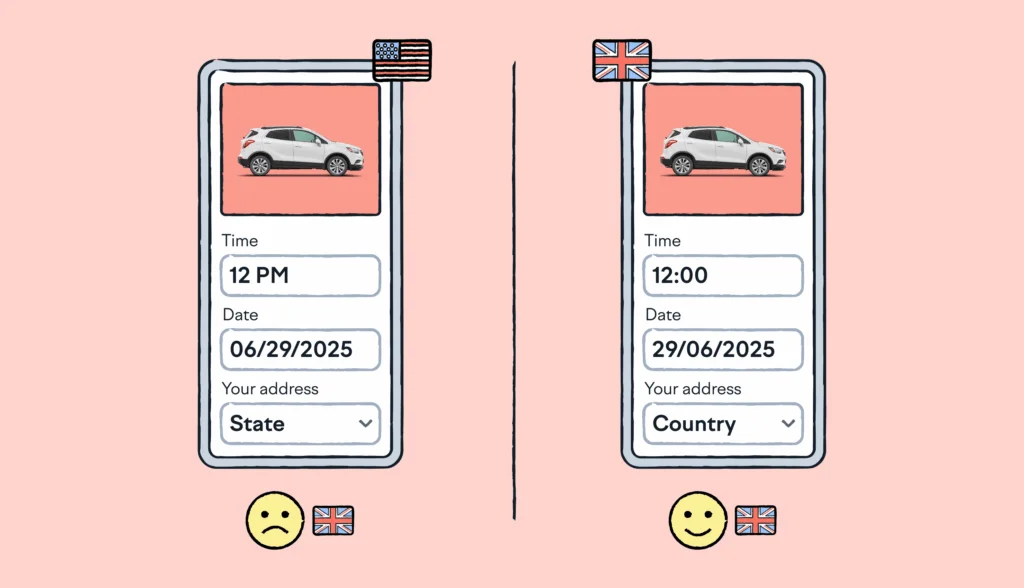Taking your marketing campaign global is not easy. You’ll want to leverage all the time, effort and budget you’ve already put into your campaigns. Plus, you need to ensure your campaign maintains its impact and resonates with the local audience when it’s translated.
So, how do you do that?
According to Acclaro’s translation director, Alessia Petrucci, it starts with transcreation. As an industry veteran, she recently shared how to ensure marketing campaigns drive awareness, engagement, and revenue around the world. Learn more about transcreation and how essential it can be to multilingual marketing content.
1. How would you explain what transcreation is, in layman’s terms?
Transcreation is a type of linguistic treatment that veers away from the source text and adapts it to the target audience. With the freedom of using the source as a guideline rather than the actual text to be translated, translators can better convey the nuances that may not come across with translation alone.
2. So you translate first, then transcreate?
Various techniques can be used, but there are a few phases. During the preparation phase, we collect all pertinent information into a document that we call the creative brief. This is basically a summary of all the vital information about your campaign: business goals, target audience demographics, product details, brand voice and tone (usually included in a translation style guide), and the overall thought process that went into producing creative content.
Then there’s the translation phase, where a translator drafts a rough translation, with no special attention to style. Together with the creative brief, this draft informs the third phase, which is adaptation. At this point, a second linguist is engaged, and the source text is no longer strictly necessary. This phase is all about the target text; how it sounds and how it fulfills the principles laid out in the creative brief.
The process for the adaptation phase varies, as different linguists like to work in different ways. Personally, I like to start by writing the words and sentences I want to use and reading them aloud to hear how they sound. Whatever you do, it’s important to leave some time between the final text and a final reading. A period of detachment is very useful to “clean” your ear and go back to the text, ready to hear it anew.
3. In the context of marketing content, what’s the difference between marketing translation and transcreation?
It’s all about conveying the information from the source text. Not all marketing content needs transcreation. In some cases, the source text needs to be respected in a way that brings the reader to the text, rather than bringing the text to the reader.
For example, I think that press releases, data sheets and websites should be translated and not transcreated. You can’t please everyone. But with copy adaptation, you can come close.
Marketing and advertising slogans, taglines and headlines often are created through due diligence, research, and consumer insight. Content that contains these elements will benefit from transcreation to keep their original intent.
4. What’s the difference between transcreation and copywriting?
Copywriting, unlike transcreation, does not imply a source text. Copywriting starts with a creative brief, and the text is created directly in the target language. Transcreation always starts with a source text and seeks to honor the source text’s intent. The very best transcreators are the perfect combination of writers, artists, and problem solvers, putting their skills to work to protect the integrity of your brand messaging.
5. What is the difference between adaptation and transcreation?
Adaptation, as we understand it at Acclaro, is the third step in the transcreation process, the one that comes after the rough translation. The adaptation phase is where we make sure that the intent of your message reaches the target market. Making sure content is familiar to the target audience can mean updating elements like visuals, units of measure, and much more.
6. Why is transcreation vs. translation such an important distinction for companies looking to translate marketing content?
There are two reasons for this important distinction.
First, different messages need different treatment to be effective. And again, it all has to do with the role of the source text and the end goal.
- If the purpose is to bring the reader to the source text (because it contains facts, feelings, and ideas that are translatable), then you need a translation. A good translation — even one where the new target language has been cleverly crafted — is based on the source text.
- If you want to bring the source text to the reader because you want them to feel something, to do something or behave in a certain way, then transcreation might be needed. You’re free from the source text and can use the properties of your target text to achieve your goals.
Second, it’s important to start with clear expectations. It’s hard to switch from translation to transcreation midway through the process. Clear expectations prevent the feedback loop and misunderstandings from dragging on to a point where the cost of correction becomes excessive.
It’s also critical to understand that the translator is not in a position to depart from the source, and, in many cases, doesn’t possess the knowledge to do so. Ultimately, translation and transcreation demand different contexts and involvement from the end users.
7. As Acclaro’s translation director, what do you see as the best ways that companies can work with their translation services provider for transcreation?
Client participation at project setup is key. Transcreation demands a higher degree of participation from the client: more context and more guidance. Because the source text is no longer guiding them, our linguists need this input from clients so that they can explore all that the target language gives them the leeway to.
The client also should inform all stakeholders about the process. This helps ensure that expectations are consistent, and minimizes the risk of misunderstandings about quality, which can strain the relationship and process.
8. Do you have any other advice for companies looking to prepare marketing campaigns for transcreation?
Keep budget, time to market and brand consistency in mind. High-quality marketing translations and transcreation are time consuming and more expensive than a regular translation, and they’re often under-budgeted. However, the price of ignoring the right treatment of creative content is even higher in terms of stress, lost time and reworking.
It’s important to note that reworking stylistic text is not the same as changing a few terms here and there. A translation is a system of decisions that rely on one another. If you remove one or change one, the structure of the content can crumble, making the effort more of a complete rewrite than an edit. This delays your launch and adds to costs.
As I mentioned before, starting with the right expectations really is key. It’s also important to clarify intentions and objectives with linguists from the start, and to provide as much contextual information in advance as possible. Reworking later on to follow different intentions or objectives can be a long and painful process!
If you’ve invested a lot in your marketing content — whether for brand recognition, to convert prospects, or to boost your international reputation — transcreation is a must-have in your global marketing toolbox. Knowing when to use transcreation and how to effectively prepare for it can help you avoid the frustration of spending time and money on ineffective messaging.
You want your marketing messaging to be just as powerful in your target language as in the original. Professional translation providers employ experienced, in-country transcreation teams with marketing expertise and can help you launch your campaign on time, on budget and with the full impact of your brand voice.
–
We thank Alessia Petrucci from Acclaro for taking the time to chat with us!





